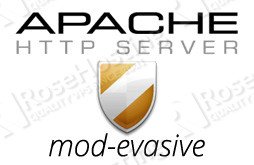Install Mod_evasive Xampp

Xampp Install As Service
I have been searching for a free open source solution to protect my web application against prying hackers, malicious screen scrapers, illegitimate crawlers, rampant bots and abusive API users. Besides being free and open source, the minimum requirement is that the solution can identify rogue user IP addresses and blacklist them if necessary. Preferably, the solution can also protect (somewhat) against denial-of-service (DOS) attack and implement API rate limiting. ModSecurity There are a few free solutions available for DOS protection. For example, there is the Apache module modevasive. To the best of my knowledge, modevasive by itself does not work for a web server located behind a load balancer or proxy because it cannot access the user IP from the X-Forwarded-For header field.
The additional installation of modrpaf or modcloudflare is required to bypass the limitation. At the time of writing, the only way to install both modules on Amazon Linux for Apache 2.2 is to download and compile the source code. Furthermore, modevasive is only compatible with Apache running in prefork mode so if your Apache is using MPM worker or event, you are out of luck. To find out which mpm module Apache is using, check the configuration file at /etc/httpd/conf.modules.d/00-mpm.conf The alternative solution I have been exploring is ModSecurity. To install, run sudo yum install modsecurity OR sudo yum install mod24security ModSecurity is a web application firewall (WAF) designed to protect Apache, NGINX and IIS against common hacking exploits.

There are a few free solutions available for DOS protection. For example, there is the Apache module mod_evasive. To the best of my knowledge, mod_evasive by itself does not work for a web server located behind a load balancer or proxy because it cannot access the user IP from the X-Forwarded-For header field. Install Mod_Security and Mod_Evasive to Protect Apache. In this article we will discuss how to install, configure, and put them into play along with Apache on RHEL.
It works by examining web requests against a set of rules to identify malicious traffic pattern (e.g. HTTP header missing user-agent) and execute the corresponding actions (e.g. Drop connection). To make life easier, you can download a predefined set of generic attack detection rules called the OWASP ModSecurity Core Rule Set (CRS) via sudo yum install modsecuritycrs You can take a look at what the rules look like at The CRS rules are installed at /etc/httpd/modsecurity.d/activatedrules You may also add your own rules at /etc/httpd/modsecurity.d/localrules Out of the box, the CRS rules will likely generate many false alarms for your particular website. This means it will inadvertently shut your users off from your site if you are not careful. For example, it may mistakenly identify a legitimate HTTP POST request with more than 255 parameters as an exploit even if your application expects it.
Install Xampp For Windows

At the minimum, before you deploy ModSecurity to production use, find the following line from ModSecurity configuration file at /etc/httpd/conf.d/modsecurity.conf SecRuleEngine On and change it to: SecRuleEngine DetectionOnly This sets ModSecurity to detection mode so it only reports potential exploits without enforcement. Every time you make changes to the configuration or rules, you must restart Apache with sudo service httpd restart.